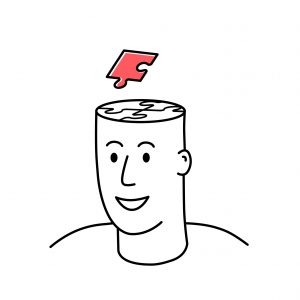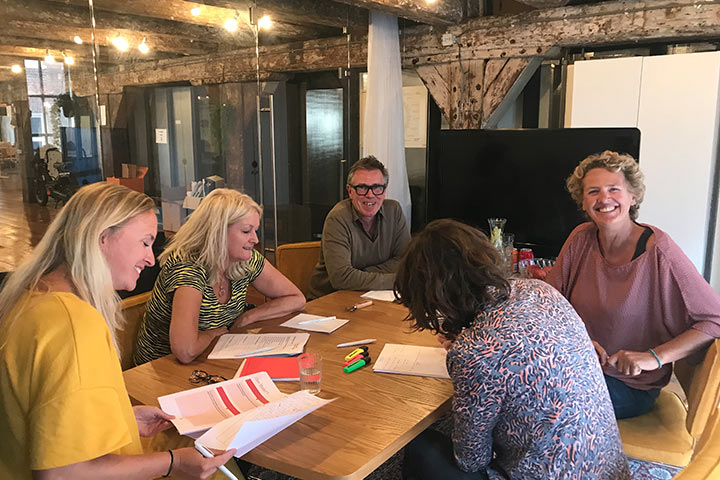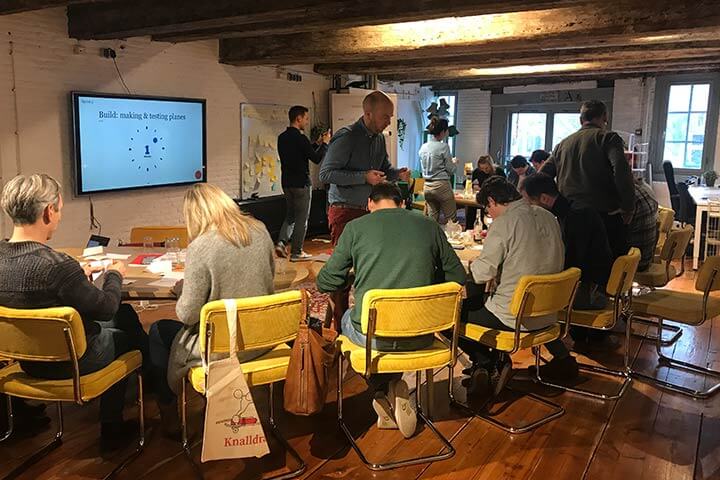This blog post shows how we can change behaviour by design. It’s hard denying we as humankind are facing serious problems today, and things need to change. Global warming is happening as we speak, obesity is overtaking smoking as the number one cause of death. And for most of us, it isn’t that we don’t care about these problems. Sometimes we care a great deal. Who wasn’t shocked after seeing Before the Flood, the stunning climate change documentary starring Leonardo DiCaprio? Who wasn’t moved by Jamie Oliver’s quest to start a Food Revolution knowing children didn’t even recognize real food like an ordinary tomato? And even if you weren’t aware of these two specific examples: We all know some serious issues are going on.
 Behaviour change: It’s a framing game
Behaviour change: It’s a framing game
We are all facing a serious challenge when it comes to the planet we all live on. But the interesting question is why don’t we act? Is it because the issues are too big to comprehend? Or do we feel too powerless to make a change? Might very well be, because they are, at least if you frame them as a problem for humankind or the world.
But if you look at global warming or obesity from a different frame, you come to realize they have one thing in common.
People.
You and me.
We eat sugar. We don’t go to the gym. We save time by buying processed foods in the supermarket. We drive cars. We take flights. We buy loads of packaging and forget to recycle. We love taking long showers and binge watch Netflix on the couch while eating crisps.
This way, you realize that the significant issues we’re facing in the world right now can be brought back to simple daily human behaviour. Things we can comprehend. Things which we could change.
So, why don’t we do it? Why don’t we cook with fresh fruit and vegetables? Why don’t we work out? Why don’t we go out and walk more often, for instance to the recycle container? The answer is simple: Because we don’t. It’s that plain simple. We can play the guilt trip or blame game for a much more extended period, but it isn’t relevant, and it surely doesn’t do us any good. Not us as people. Or us as humankind.
Behaviour change: We’re all just irrational.
The only relevant question to ask ourselves is: How can we help people adjust this daily behaviour? How can we nudge people into making better choices on an everyday basis?
I believe the answer is behavioural design. If you want to change behaviour, you need to understand behaviour. You need to know how people make decisions. Why they do things and why they don’t. You need to understand human psychology.
Recent years the understanding of behavioural psychology has skyrocketed. We now know more about the human brain than ever before. To me, the biggest eye-opener was that we all are entirely irrational. Not just a little bit, but for the most part.
We all think we consciously make decisions, we all believe that we control our thinking. But in fact, most of our decisions are made through shortcuts – such as heuristics and biases – and have nothing to do with a rational or controlled thinking process. As one of the groundbreaking researchers in behavioural psychology Daniel Kahneman has put it:
We are very influenced by completely automatic things that we have no control over, and we don’t know we’re doing it.
That explains why the blame and guilt trip game isn’t beneficial. How can you be blamed or feel guilty if most of the time we’re just doing things automatically without even knowing we’re doing it? Dr. Kahneman says it even more prosaic:
We are blind to our blindness. We have very little idea of how little we know. We’re not designed to know how little we know.
To conclude behavioural psychology has given us powerful insights into the human mind.
Behaviour change: Challenging a commonly accepted assumption
To me, a crucial part of solving the puzzle of making this world a better, healthier, happier place is the realization that behavioural psychology challenges a commonly accepted assumption that people who make poor decisions, made the conscious decision to do so. But science has shown us that’s not true.
Still, millions of euros are invested in campaigns to convince people to act differently, targeting their thinking capacity. That’s just money down the drain.
But what is the answer then? Understanding how the mind works is just one thing. But how do you translate scientific research into practice? How can it stop me from eating pizza? From buying sneakers for comfort instead of running? From buying plastic bottles instead of refilling my own? How can we apply science to daily life?
Want to learn how to use behavioural science to tackle societal challenges?
The Fundamentals Course is perfect for you. You will master a hands-on method to tackle even wicked challenges using applied behavioural science. Mind-shifting know-how that is made 100% practical.
Changing behaviour: Behavioural design is the answer
I think a behavioural design is the only answer. I do realize design instantly opens up associations about the visual, about aesthetics. But if you look at design in a broader sense and if you take a closer look at what designers do, you see their job is to find new solutions to problems using creativity. And there are some fascinating things to learn from the way they work:
1. Just as behavioural psychologists, designers have always taken humans as a starting point. When designing a new chair, they want people to be able to sit on it. When designing a new fountain pen, they want people to be able to write correctly.
2. Just as a behavioural psychologist, designers do empirical testing. Designers have always used early testing with prototypes. They build scale models; they make paper cut dresses, they make beta releases. They watch how people interact, react or behave. And then measure, learn and adapt.
A lot is written about design thinking. Tim Brown, the CEO of IDEO – one of the leading innovation companies – has written a great book on the subject: Change by Design, if you want to get some more in-depth information.
Behavioural design is the symbioses between two things: behavioural psychology and design thinking.
To me, Behavioural Design is the symbioses between two things: behavioural psychology and design thinking. If you combine those two worlds, you’ll be able to come up with better products, with better ideas and better interventions that will help people make better decisions, as you take people and their irrational decision making into account when developing an idea.
Behaviour change: Change will come!
But to get back to us as humankind tackling the world’s problems, my belief is design thinking is indeed an answer. It will help you:
- See that obesity, and global warming are both behavioural problems on an individual level, making them comprehensive and tangible;
- Understand people most of the times aren’t unwilling, but unable to change their behaviour, making you realize you need ideas that enable them to make better decisions;
- Use design thinking to come up with ideas that influence people’s daily behaviour and get evidence-based results by testing them at an early stage;
- Experience that change will come;
- The first step in finding wicked answers to wicked problems is reframing a question to a behavioural challenge.
Behavioural design teaches us that the first step in finding a great answer is reframing the question to a behavioural challenge. By doing this, you’ll automatically end up with people. You’ll end up with us. At you. And if all of us make a change on a daily basis, we make an impact. We can change the world. I am convinced.
BONUS: free ebook 'Six rules for Designing your Happiness.'
Especially for you we've created a free eBook 'Six rules for Designing your Happiness.?' For you to keep at hand, so you can start using the insights from Behavioural Design whenever you want—it is a little gift from us to you.
How do you do. Our name is SUE.
Do you want to learn more?
Suppose you want to learn more about how influence works. In that case, you might want to consider joining our Behavioural Design Academy, our officially accredited educational institution that already trained 2500+ people from 45+ countries in applied Behavioural Design. Or book an in-company training or one-day workshop for your team. In our top-notch training, we teach the Behavioural Design Method© and the Influence Framework©. Two powerful tools to make behavioural change happen in practice.
You can also hire SUE to help you to bring an innovative perspective on your product, service, policy or marketing. In a Behavioural Design Sprint, we help you shape choice and desired behaviours using a mix of behavioural psychology and creativity.
You can download the Behavioural Design Fundamentals Course brochure, contact us here or subscribe to our Behavioural Design Digest. This is our weekly newsletter in which we deconstruct how influence works in work, life and society.
Or maybe, you’re just curious about SUE | Behavioural Design. Here’s where you can read our backstory.








